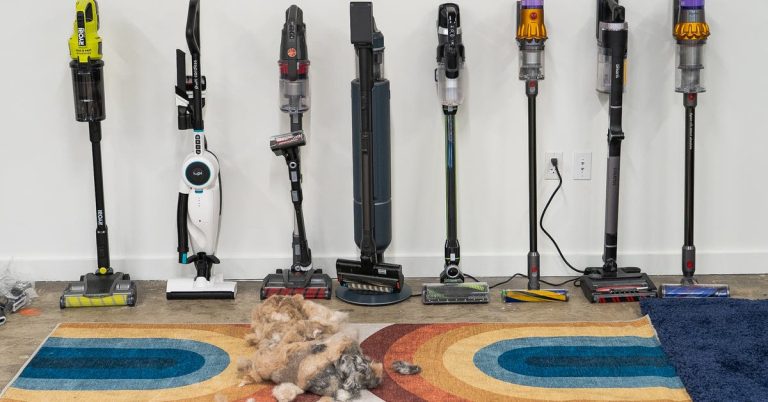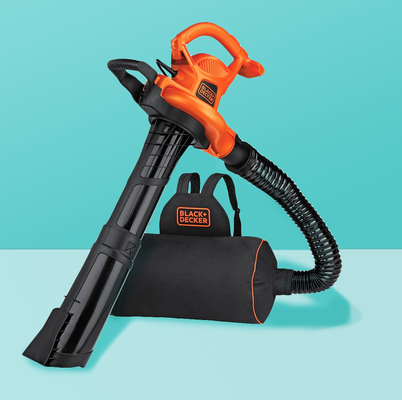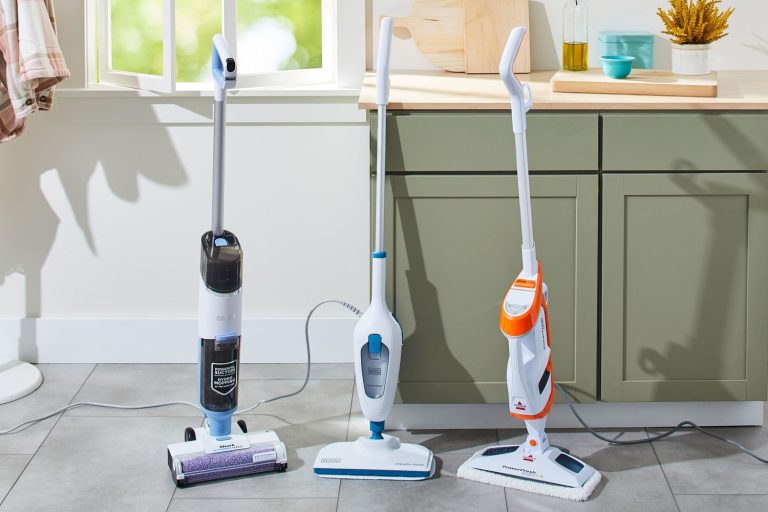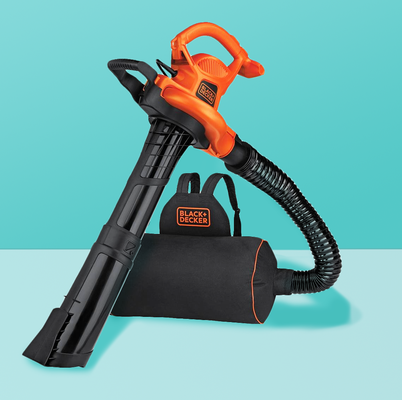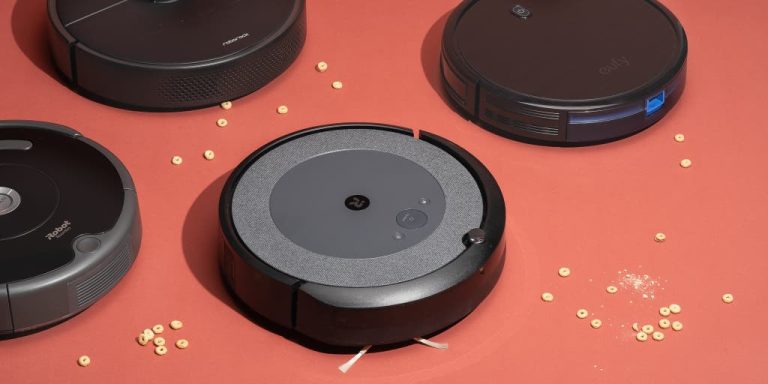What is Robot Vacuum Mapping?
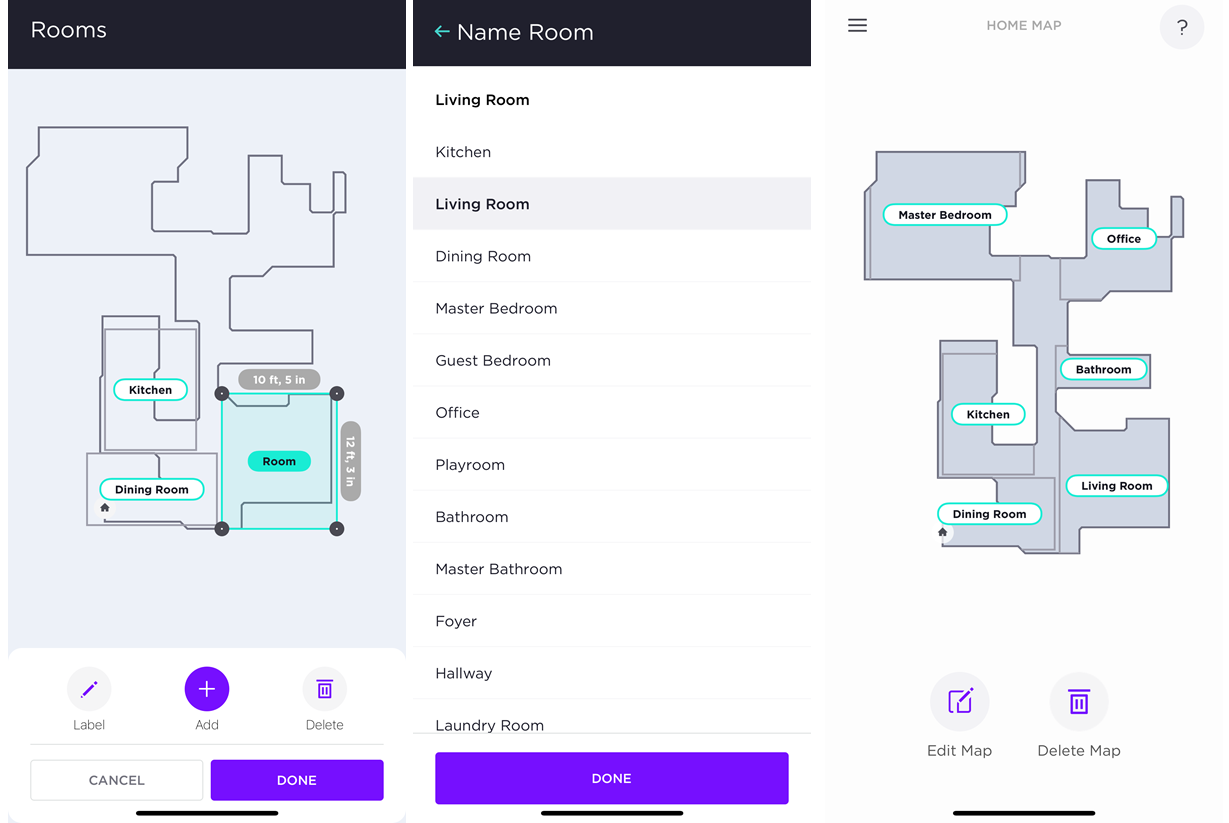
Robot vacuum mapping is a technology that allows robotic vacuums to navigate and clean efficiently. It creates a virtual map of the space, optimizing the cleaning path.
Adopting the latest advancements in home automation, robot vacuum mapping technology stands at the forefront, fundamentally transforming how we maintain our living spaces. These intelligent devices, armed with sensors and sophisticated algorithms, embark on a strategic cleaning journey across your home.
Unlike traditional vacuum cleaners, they remember the layout of your rooms, ensuring no corner is left untouched. With such precision, these robotic assistants cater to the busy homeowner, promising a thorough clean with minimal human intervention. The adoption of robot vacuum mapping not only elevates the standard of cleanliness but also exemplifies the seamless integration of technology into everyday life, making smart home maintenance not just a possibility but a reality.

Credit: www.ecovacs.com
Introduction To Robot Vacuum Mapping
In the realm of home automation, the rise of robot vacuums has revolutionized the way we clean our living spaces. These innovative devices not only ensure our floors are kept spotless but also bring a level of convenience that was unimaginable a few decades ago. But have you ever wondered how these robotic helpers manage to navigate our complex home environments? The secret lies in robot vacuum mapping––a sophisticated technology that transforms cleaning from a chore into a seamless activity.
Understanding The Basics Of Robot Vacuums
At their core, robot vacuums are autonomously guided devices equipped with a variety of sensors and smart technology. These sensors enable the vacuum to detect obstacles, avoid stairs, and recognize dirty areas. Essential components of any robot vacuum include:
- Navigation Sensors: Tools that empower the vacuum to move around and orient itself within your home.
- Dirt Sensors: These detect the level of dirt and adjust the cleaning power accordingly.
- Battery Life: Determines how long the vacuum can clean before needing to recharge.
Robot vacuums create a virtual map of their cleaning area to ensure no spot is missed. This mapping ability is a game-changer in the cleaning industry, and it has rapidly evolved from simple pattern movements to complex spatial awareness.
The Evolution Of Vacuum Technology: From Manual To Robotic
The journey from manual to robotic vacuum cleaners showcases a significant leap in technology. Originally, vacuum cleaners required manual operation, moving from room to room in a labor-intensive process. Then, robot vacuums entered the scene:
| Generation | Technology | Capabilities |
|---|---|---|
| First | Basic algorithms | Random cleaning patterns |
| Second | Infrared sensors | Avoiding obstacles, stairs |
| Current | Mapping technology | Precise navigation, selective room cleaning, and learning layouts |
The latest robot vacuums employ advanced mapping technologies, such as LiDAR (Light Detection and Ranging) or VSLAM (Visual Simultaneous Localization and Mapping), to create high-precision maps. This technological evolution means that robot vacuums can clean your home more efficiently, effectively, and with minimal human intervention.
Credit: www.reddit.com
How Robot Vacuum Mapping Works
Imagine a world where your little robotic helper not only vacuums your home but navigates with precision and finesse. That’s the magic of robot vacuum mapping technology. By creating a digital blueprint of your living space, these smart devices plan efficient cleaning paths, avoid obstacles, and remember the intricate layout of your home. This sophistication in housekeeping is no longer a futuristic dream—it’s here, and it’s powered by the cutting-edge methodologies detailed below.
The Role Of Sensors In Navigation
The heart of a robot vacuum’s mapping system lies in its rich array of sensors. These sensors serve as the eyes and feelers of the device, providing critical data to navigate around furniture, dodge staircases, and even recognize the difference between a solid wall and a curtain. The types of sensors widely used include:
- Lidar Sensors: Emit laser beams to measure distances and map out rooms.
- Ultrasonic Sensors: Use high-frequency soundwaves to detect objects.
- Infrared Sensors: Aid in detecting obstacles and cliffs to prevent falls.
- Optical Sensors: Track movement and location to ensure thorough cleaning.
The integration of these sensors enables the robot vacuums to compile comprehensive data sets, crucial for accurate navigation and map creation.
Mapping Algorithms: Creating A Virtual Layout Of Your Home
At the core of the vacuum’s intelligence is its mapping algorithm, a sophisticated system that interprets sensor data to render a virtual layout of your living space. The robot employs algorithms such as:
- Simultaneous Localization And Mapping (SLAM)
- Visual SLAM, which incorporates camera data
- Various computational techniques to optimize the cleaning route over time
These techniques allow the robot vacuum to construct a detailed map while simultaneously tracking its location within that map – a technological double act that spells efficiency and precision.
Different Types Of Mapping Technologies Used In Robot Vacuums
As innovation marches on, various mapping technologies emerge, each with its strengths. Some top contenders are:
| Technology Type | Main Feature |
|---|---|
| Lidar Mapping | Highly accurate distance measurement |
| Visual Mapping (VSLAM) | Uses cameras to map and recognize the environment |
| Gyroscopic Mapping | Uses gyroscope data to determine orientation and movement |
Each technology has its unique application, often determined by the robot’s model and intended function. From basic gyroscopic systems ideal for simple layouts to complex VSLAM suited for dynamic and cluttered environments, robot vacuums come equipped to handle various challenges posed by modern household landscapes.
The Benefits Of Vacuum Mapping Technology
As smart homes become increasingly common, robot vacuum mapping technology is revolutionizing the way we clean. This innovative feature provides a multitude of benefits that streamline the home cleaning process. With precision mapping, robot vacuums are not just cleaning; they are intelligently navigating your living space. Let’s explore the advantages that vacuum mapping technology brings to the table.
Increased Cleaning Efficiency And Accuracy
One of the standout benefits of vacuum mapping technology is the marked improvement in cleaning efficiency and accuracy. By creating a virtual map of your space, robot vacuums can plan and execute a systematic cleaning path, avoiding obstacles and ensuring that no area is unintentionally missed. The days of random cleaning patterns are long gone—leading to a more thorough and time-saving approach to keeping floors spotless.
Customizable Cleaning Areas And No-go Zones
Personalization is at the core of this technology. With the ability to set up customizable cleaning areas and designate no-go zones, you maintain control over where your robot vacuum operates. This feature is especially useful for homes with pet bowls, delicate furniture, or children’s play areas. By utilizing a companion app, users can easily adjust these settings to suit their day-to-day needs, ensuring a cleaning routine that’s tailored to their home’s specific requirements.
Learning Your Home’s Layout Over Time For Optimized Cleaning
Robot vacuums equipped with mapping technology are designed to learn and adapt to your home’s layout over several cleaning sessions. With each pass, these smart devices refine their understanding of your home, resulting in enhanced performance and precision. This continuous learning process is key to optimized cleaning, with the robot vacuum able to navigate more effectively, dodge static obstacles, and update its route for the best possible clean.
Comparative Analysis Of Robot Vacuums Without Mapping
Exploring the world of robotic vacuums brings us to a crucial feature – mapping technology. This innovation revolutionizes how these devices navigate and clean our homes with precision. But what about robot vacuums that come without mapping capabilities? A deep dive into these gadgets showcases a stark difference in their operation. By understanding performance, recognizing limitations, and weighing the cost versus benefits, we can discern whether mapping technology is a necessity for your cleaning needs.
Performance Of Random-path Robot Vacuums
Robot vacuums following a random-path pattern rely on an algorithm that dictates spontaneous movements. This means they navigate a room by bouncing off walls and obstacles. While this can eventually lead to a cleaned space, the coverage may not be as consistent or efficient as their mapping counterparts. Users might notice:
- Repeats in cleaning certain areas
- Missed spots due to the lack of strategic navigation
- Longer cleaning times as they cover ground less systematically
However, these models might suffice for smaller rooms or less complex layouts where thorough coverage can be achieved over time despite their random paths.
The Limitations Of Non-mapping Robot Vacuums
Non-mapping robot vacuums may fall short in certain aspects when it comes to cleaning proficiency. Notably, they:
- Cannot remember the layout of the space, leading to potential inefficiencies in cleaning patterns.
- Lack the ability to create or follow cleaning strategies for different types of rooms or complexities.
- May not resume cleaning from where they left off after a charging cycle, unlike models with mapping that offer this seamless function.
These limitations can be especially evident in homes with multiple rooms, complex furniture arrangements, or when a specific sequence of cleaning is desired.
Cost Vs. Benefits: Is Mapping Technology Worth The Investment?
As with any technological advance, mapping in robot vacuums adds to the price tag. The question arises, does the investment translate to tangible benefits? Mapping technology offers:
| Advantages | Considerations |
|---|---|
| Strategic cleaning routes | Higher initial cost |
| Time efficiency | Potential for technological issues |
| Customizable cleaning zones | May include unnecessary features for small/simple spaces |
Each buyer must evaluate their specific requirements, including the layout of their home, their lifestyle, and their budget, to determine if the benefits gleaned from a mapping robot vacuum justify the extra expenses involved.
Challenges And Limitations Of Robot Vacuum Mapping
While robot vacuums offer the promise of autonomous cleaning, navigating the complex labyrinth of our homes is no small feat. The technology that allows these devices to map our living spaces also presents a unique set of challenges and limitations. Understanding these can help consumers set realistic expectations and choose devices that best fit their home environment and privacy preferences.
Obstacle Recognition And Avoidance
Conquering the unpredictable terrain of household clutter is a significant challenge for robot vacuums.
- Dynamic Environments: Homes change regularly; new obstacles like toys or moved furniture can appear unexpectedly. Robot vacuums must be able to adapt in real-time to avoid getting stuck or damaging items.
- Sensor Limitations: Most robot vacuums use infrared or laser sensors to detect obstacles. While effective, these can struggle with transparent or highly reflective surfaces, sometimes leading to collisions.
- Small Object Detection: Items like cables or small toys can be particularly troublesome, as they may be too small for the sensors to identify, yet large enough to cause a jam or other issues.
Dealing With Multi-level Homes And Complex Floor Plans
Navigating through multi-level homes and complex floor plans requires advanced mapping capabilities that some robot vacuums lack.
- Multiple Floors: Robot vacuums generally do not have the ability to climb stairs or transition between different levels autonomously.
- Re-Mapping Necessity: Units without multi-floor memory must re-map areas each time they clean a new floor, which can be inefficient and time-consuming.
- Layout Complexity: Rooms with high numbers of walls, furniture, or irregular shapes present added navigational challenges and can sometimes confuse robot vacuum mapping systems.
Privacy Concerns With Mapping Data Storage And Usage
The data collected by robot vacuums to map your home isn’t just about avoiding the couch or dining table. It’s a layout of your private space, which raises important privacy concerns.
- Data Security: The storage and transmission of mapping data can be vulnerable to hacking, potentially exposing the details of a user’s home to unauthorized individuals.
- Usage of Information: There are also concerns about how manufacturers might use mapping data. Could it be analyzed or sold for marketing purposes? This remains a significant concern for many users.
- Opt-In/Opt-Out: Frequently, it is unclear if users have the ability to opt-in or out of data collection or sharing, leading to a potential loss of control over personal information.
Understanding these limitations and challenges is crucial when it comes to setting the right expectations and ensuring that the robot vacuum one chooses aligns with their specific needs and concern for privacy.

Credit: community.home-assistant.io
Maintaining And Optimizing Your Robot Vacuum’s Mapping Capabilities
Robot vacuum mapping technology is akin to giving your automated helper a virtual blueprint of your home. This sophisticated system allows your robotic vacuum to navigate through rooms with ease, avoiding obstacles and efficiently cleaning every nook and cranny. But, much like any high-tech device, maintaining and optimizing your robot vacuum’s mapping capabilities is key to ensuring its continuous peak performance. Pivotal to a seamless cleaning experience, keeping your vacuum’s “intellect” sharp involves regular updates, sensor maintenance, and swift troubleshooting of any mapping errors.
Regular Updates And Calibration For Better Performance
Robot vacuums operate most effectively when their software is up-to-date. Manufacturers frequently release firmware updates that enhance the mapping technology, fixing bugs and improving navigation algorithms. Performing these updates is straightforward:
- Ensure your device is connected to Wi-Fi.
- Access the vacuum’s app on your smartphone.
- Follow the in-app instructions to download and install the latest update.
Calibration is equally important. Occasionally, your robot vacuum might start to forget its path or bump into furniture unexpectedly. Re-calibration can correct this:
- Place the vacuum on its charging station.
- Via the app, select the calibration option.
- Allow the robot to traverse your home to recreate the map.
Cleaning And Maintenance Tips For Sensor Functionality
The vacuum’s sensors are the eyes of its mapping system. Keeping these sensors clean is crucial. Here is how to maintain them:
| Sensor Type | Maintenance Action |
|---|---|
| Cliff sensors | Gently wipe with a dry cloth to avoid falls. |
| Obstacle sensors | Use a soft brush to clear any debris. |
| Optical sensors | Clean with a microfiber cloth to ensure precise navigation. |
In addition, check the wheels and brushes for tangled hair or debris, and clear the robot’s air filter regularly to ensure effective suction power.
Troubleshooting Common Mapping Errors
When your robot vacuum starts displaying navigation issues, it might signify mapping errors. Common problems include:
- Getting stuck or lost
- Skipping rooms or areas
- Repeatedly cleaning the same spot
To troubleshoot, try these steps:
- Restart the vacuum to reset its mapping system.
- Remove any temporary obstacles that could confuse the mapping sensors.
- Double-check the app’s mapped area to ensure it’s accurate and up-to-date.
If problems persist, contacting customer support for your device may be in order. They can provide detailed assistance and, if necessary, guide you through a factory reset.
The Future Of Robot Vacuum Mapping Technology
The Future of Robot Vacuum Mapping Technology beckons a new era of convenience and precision in household cleaning. With quantum leaps in technology, the traditional trajectory of robot vacuums is evolving into a sophisticated realm where these smart machines not only navigate efficiently but also learn and adapt. Imagine a world where your vacuum not only knows every nook and cranny of your home but also predicts your cleaning preferences and schedules. That future is not just a vision—it’s on the verge of becoming a reality.
Advancements In Ai And Machine Learning For Smarter Vacuums
The next generation of robot vacuums hinges on cutting-edge artificial intelligence (AI) and machine learning algorithms. These technologies empower the vacuums to map out living spaces with remarkable accuracy and flexibility. Gone are the days of random patterns; the future lies in vacuums that can:
- Self-learn the layout of your home and update their internal maps with dynamic changes such as moved furniture or new obstacles.
- Coordinate with other smart devices for synchronized cleaning sessions while avoiding disruptions in your daily routine.
- Automate cleaning paths by understanding traffic patterns in your home, focusing on high-traffic zones for more frequent cleaning.
Integration With Smart Home Ecosystems
Smooth integration with smart home ecosystems is a crucial step toward seamless interaction between robot vacuums and other connected devices. Future mapping technologies will likely feature:
- Real-time synchronization with smart home assistants to start or schedule cleanings through simple voice commands.
- Connectivity with other IoT devices such as smart thermostats and lighting systems to optimize cleaning based on occupancy and time of day.
- Enhanced mapping capabilities that feed valuable data to other devices, contributing to a truly interconnected and responsive smart home.
Predicting The Next Big Features In Robot Vacuum Mapping
Innovation continues to accelerate in the robot vacuum industry, and predicting future mapping features is both exciting and fascinating. Expect to see advancements such as:
| Feature | Description | Impact |
|---|---|---|
| 3D Mapping | Use of advanced sensors to create three-dimensional maps for better space understanding. | Enhanced obstacle avoidance and precise cleaning even in complex environments. |
| Adaptive Learning | Machine learning models that adapt over time to user habits and preferences. | Personalized cleaning experiences tailored to individual schedules and needs. |
| Zonal Cleaning | Ability to designate specific areas for targeted cleaning operations. | Efficiency improvements by focusing on areas that require more frequent attention. |
Each feature promises to redefine the interaction between users and their cleaning devices, enhancing the smart living experience and heralding new levels of domestic automation and efficiency.
Frequently Asked Questions For What Is Robot Vacuum Mapping
How Long Does It Take For A Robot Vacuum To Map Your House?
A robot vacuum typically requires one to two cleaning cycles to fully map a house, often completing the task in a few hours.
How Does Room Mapping Work?
Room mapping involves matching and aligning hotel room inventory from different sources. It ensures consistent room descriptions across booking platforms, simplifying hotel room selection for customers.
How Does Robot Vacuum Know Where To Go?
Robot vacuums navigate using sensors and algorithms. They detect obstacles, create digital maps, and follow systematic cleaning paths. Some models use cameras or lasers for precise positioning and room mapping.
Conclusion
Understanding robot vacuum mapping transforms your cleaning experience. This smart technology ensures thorough, efficient home maintenance. Embracing these automated helpers saves time and elevates living spaces. For spotless floors, consider mapping vacuums—the future of convenient, hands-free cleaning.
